Mission: Impact podcast & blog
Build a better world without becoming a martyr to your nonprofit cause
Listen on:
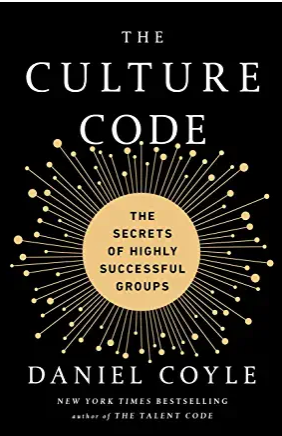 The Culture Code: The Secrets of Highly Successful Groups By Daniel Coyle What creates successful group and organizational cultures? That is the question that Daniel Coyle pursues in his book. “Culture is a set of living relationships working toward a shared goal. It’s not something you are. It’s something you do.” US culture tends to focus on the charismatic, visionary leader yet Coyle’s research finds that successful groups tend to do lots of small things towards success rather than large dramatic things. Three key skills emerge – build safety, share vulnerability and establish purpose. Like Jim Collin’s Good to Great, Coyle finds a lot of quiet, observational leaders who cultivate a healthy ecosystem and group around them through lots of questions at key points to help team members learn to think on their own. There are lots of useful and actionable points in the book. I wish for a future when business books highlight as many women as men in their examples without having women in the title! 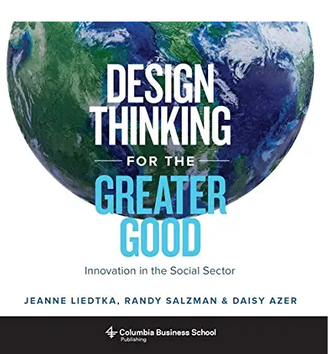 Design Thinking for the Greater Good: Innovation in the Social Sector By Jeanne Liedtka, Randy Salzman & Daisy Azer Design thinking is a problem solving approach that is human centered. It prioritizes really getting to know the people involved in your challenge and looking at the world from their perspective. It focuses on multiple options, experimentation and iteration. This method has served to democratize design and Jeanne Liedtke’s model makes it particularly accessible (What is? What if? What wows? And What works?). While the process originated in Silicon Valley, Liedtke and her team profile how design thinking has been used in the social sector. They include case studies from government, national, state and local nonprofit organizations – from the US and internationally. Each instance showcases the real experience – from the excitement at the start of the project to the dead-ends and false starts to results that in many instances could not have been envisioned from the outset. Using design thinking, the professionals highlighted get to see their organization from the perspective of whom they serve. With this, they are able to identify the ways in which the system is not made for the client. Then they are able to imagine how they might make things better. This is all in the service of having clients have a better and more humane experience while getting the help the organization is designed to deliver. If you have just heard about design thinking and have wondered how it might apply in your situation, this book is a great place to start. 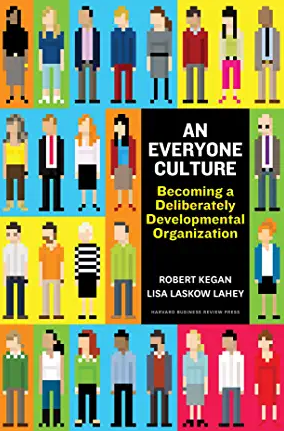 An Everyone Culture: Becoming a Deliberately Developmental Organization By Robert Kegan and Lisa Laskow Lahey “In most organizations, everyone is doing a second job no one is paying them for…Most people are spending time and energy covering up their weaknesses, managing other people’s impressions of them, showing themselves to their best advantage, playing politics, hiding their inadequacies, hiding their uncertainties, hiding their limitations. Hiding.” (pg1, An Everyone Culture) What if this were not necessary? An Everyone Culture describes a few unicorn organizations that have truly put people at the center of their purpose. Developing and investing in people. Not as an afterthought or bonus for just for a few people – for everyone. Where the culture revolves around helping everyone recognize, acknowledge and learn from their mistakes, build on their strengths and stretch and grow. Lots of organizations give lip service to the idea that people are their most important asset. Yet they rarely act as if that were really true. Each of the three organizations the authors describe as deliberately developmental organizations (DDO) do this through a multitude of practices that center transparency, regular feedback across all levels, team building and professional development – at the individual, team and organizational level. While the authors went into their research assuming that being a DDO would contribute to the business success of these organizations, they concluded by the end that in fact being a DDO is the cause of the business’ success. Much has been written about how emotional intelligence and people skills will be the key differentiators as work continues to morph and shift. Learn from these leaders what that might look like. I did a workshop recently for a group of nonprofit professionals on one of the most useful research tools in the design thinking tool kit – the customer journey map. Customer may need to be translated for nonprofits. For associations it could be mapping the member and nonmember experience. Or those you serve and support. Or customer could be swapped for partner organization. Mapping the Experience  Photo by rawpixel.com from Pexels Photo by rawpixel.com from Pexels Customer journey maps usually hone in on a specific interaction that a customer or member has with your organization. A variation on the journey map -- the experience map can zoom a little further out to see the flow of whole experience. Capturing the ups and down from Pixabay from Pixabay Regardless of the scale you decide to focus on, the journey map is essentially a blank flow chart that someone fills in detailing the steps they take to accomplish a specific task. Some examples include joining your organization or deciding to attend an event. The map typically include spaces for the person to note their actions, what were highlights and what are pain points. Thinking, feeling, doing Especially important is providing space for the person to note their emotions. You might ask the person who is filling out the map to name the experience stages the group the individual steps. Often it is important to capture the context for the interaction including the place, the environment and who is involved. Your goal is to capture what your customer is thinking, feeling and doing. Be sure to allow customers to draw their own maps. You can then to look for insights from maps. Have your customers or members or participants tell you what theirexperience is rather than assuming you already know. At the same time, it is also useful for you to create a hypothesis journey map to note your thoughts about the experience you are investigating. You can then compare your version to the versions created by actual customers to see where you got it right and what differs. Making the hidden visibleThe journey map captures both the actions that the person takes as well as what is normally hidden. It prompts them to note what they were thinking at the time and what they were feeling. The emotional up and down of an experience will provide key insights into what aspects might need to be improved. Case study: Conference First timersDuring the workshop, we worked on the experience of first timers at an event or conference and identified several pain points including:
What do you need to learn about your members? You may choose to investigate other aspects of member engagement just as your members deciding to join, deciding to volunteer. What research questions do you have that could benefit from this tool? Download this template for your use.
 photo by Mindy Johnson photo by Mindy Johnson This question helps you uncover the assumptions embedded in an idea. Often assumptions for programs and services are hidden in three key areas: audience, problem and solution. For the idea to be a good one, you need to have found the right audience, correctly identified an important problem and designed a solution that is viable. Let me give you an example. Using a design thinking approach to design new offerings for key segments of our organization’s audience, a team I led at my last association was able to design experiments that gave us feedback in each of these three key areas. Audience In one instance, we had designed a program for one audience segment. After we tested the idea with the target audience and received positive feedback, we proceeded to run a pilot. After successfully offering the program to one segment the association’s audience, we were able to replicate it for another audience. Problem Often this area is the most likely to trip you up. Have you identified a problem that is worth solving? Or a problem that is really critical for your target audience? Or is it just something that would be nice to solve? When hard choices are made about time, money and energy, this challenge gets put on the back burner. To test our understanding of the problem, we wrote a problem statement or description of what we thought the problem was. For example: “association professionals often have a clear understanding of the views of their highly engaged volunteers, but are not sure that these reflect their average member.” Through our experiments, we were able to get feedback on how important each issue was. With feedback we were able to eliminate a number of ideas that addressed problems that were not seen as critical. Solution When is the last time you got caught up in your idea and created something more elaborate than was really needed? In one case of one program we were testing with members, during the brainstorming stage, the design team had envisioned an executive leadership development program with an extensive online wrap around component. After testing and customer feedback, we learned that members were interested in the in-person aspect of the program. They doubted, however, that they would use the online components. Thus with a short testing period, we were able to eliminate a costly aspect of the program that would have be time consuming and resource intensive to create. It would have also necessitated increasing the program price, yet our research showed it did not provide sufficient value.
By testing early, getting feedback from customers we were able to learn and iterate, saving money and staff time by eliminating options that sounded promising at the white board but proved to have faulty assumptions. Want to talk about how this might apply to your organization? Request a free coaching session. Iteration Iteration You have probably heard that word a lot recently. Whether you are talking about adaptive management, design thinking or lean start up, each approach involves iteration and experimentation. Creating a prototype – something much simpler and less expensive than a pilot project – is easy to imagine when you are talking about a tangible product. But what about a program or service your nonprofit or association plans to deliver? How can you create a low cost prototype of that to get in front of your customers/members/audience? Blah, Blah, Blah Nonprofits and association staff often rely on describing their program – whether to their board or in a grant application – through words. It is then up to the listener/reader to imagine what they are talking about. And usually the focus was on convincing those with money to support this new venture. If the pitch is successful, the program is then funded, usually as a pilot program is developed over a few years. 4 flaws to this approach This approach has multiple flaws that are easily addressed.
What is a storyboard? Movies, videos, TV shows are all story boarded before filming starts. The storyboard is a sequence of drawings that show how the shots will progress. For a program you have imagined, you draw the steps in the storyboard that a program participant would take as they complete your program. Think of it as the comic book version of the program you want to create. But I can’t draw 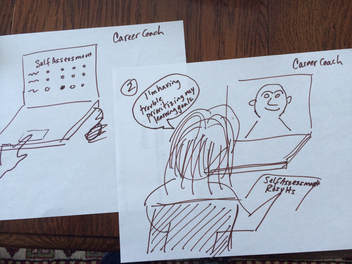 When I worked with the design teams a number of team members were reluctant when we got to this set because they said they couldn’t draw. I reminded them that this wasn’t the purpose – we were not looking for artistic ability. Just clear enough stick figures to show what would happen as part of the program. Here is an example of piece of one of our first draft storyboards. No awards to artistic merit here! We then worked with a professional illustrator to create clearer versions to put in front of our audience. Benefits of the storyboard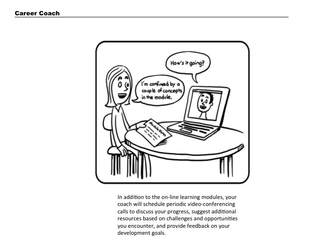
Let’s talk. I work with associations and nonprofits to help them lower the risk out of launching new program and service development initiatives by coaching them on using human centered design innovation approaches and tools. Most organizations believe they keep their end user, audience, members or customers front of mind when they are creating new programs or service offerings. Yet often this is based on preconceived notions about members, beliefs developed from a staff member’s time in the field, or based on interactions with a few of their volunteer leaders. It is rarely based on an in depth exploration of the day-to-day work life of their members. Qualitative research digs into their experience and has the opportunity to uncover unmet needs. |
Categories
All
Archives
July 2024

Grace Social Sector Consulting, LLC, owns the copyright in and to all content in and transcripts of the Mission: Impact podcast, as well as the Mission: Impact blog with all rights reserved, including right of publicity.
|
Telephone301-857-9335
|
info[at]gracesocialsector.com
|
Grace Social Sector Consulting, LLC, owns the copyright in and to all content in, including transcripts and audio of the Mission: Impact podcast and all content on this website, with all rights reserved, including right of publicity.
|